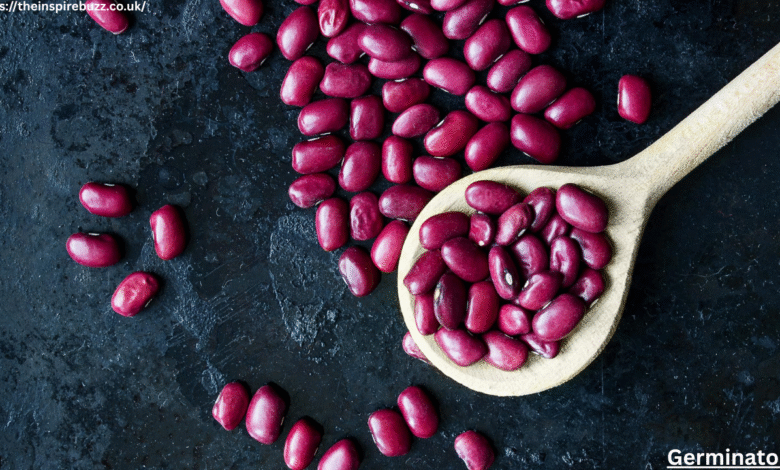The Ultimate Guide to Germinatoire Unlocking the Power of Seed Germination Chambers

Seed germination is the foundational step in plant life, but achieving successful and uniform sprouting can often be a challenge. Enter the germinatoire a controlled environment chamber specifically designed to optimize the conditions necessary for seed germination. As gardening and agriculture embrace technology, germinatoires are becoming indispensable tools for both hobbyists and commercial growers.
In simple terms, a germinatoire ensures that seeds receive just the right amount of warmth, humidity, and light to kickstart life. Unlike open-soil methods, which are prone to unpredictable weather and pests, this controlled approach guarantees higher germination success and healthier seedlings. Whether you’re growing herbs on a windowsill or preparing hundreds of seedlings for a farm, a germinatoire can dramatically improve your outcomes.
This article takes a deep dive into what makes a germinatoire essential in modern cultivation. From its components and historical evolution to its wide-ranging benefits and usage tips, we’ll cover every angle to help you get started with or improve your germination process. Whether you’re building your own DIY system or investing in a high-tech solution, this guide has something valuable for everyone.
Understanding the Germinatoire: Definition, History, and Evolution
The term germinatoire originates from the French word “germination,” and it refers to an enclosed environment tailored for sprouting seeds. These chambers allow for precise control of temperature, humidity, and light—three of the most critical variables affecting germination success. Originally used in laboratories and agricultural research centers, germinatoires have now become mainstream, available in compact versions for home use and large-scale models for commercial growers.
Historically, seed germination was left to nature. Farmers would sow seeds directly into the soil and hope for favorable conditions. While this worked to an extent, the approach lacked consistency. It wasn’t until the late 19th and early 20th centuries that scientists began to recognize the need for controlled germination environments. Early germinatoires were rudimentary—wooden boxes heated with oil lamps or coals. However, they laid the groundwork for the sophisticated germination chambers we have today.
In recent decades, technological advancements have transformed germinatoires into smart systems capable of real-time monitoring and adjustment. Today, digital interfaces allow users to set and maintain optimal environmental conditions, while sensors ensure every seed has an equal chance to thrive. This evolution from primitive wooden boxes to AI-integrated systems represents a significant leap in agricultural science, enabling year-round cultivation regardless of external climate.
Components and Functionality of a Germinatoire
A germinatoire is more than just a box—it’s an integrated system designed to simulate ideal conditions for seed development. At its core are several key components. First is the temperature control system, which maintains warmth in the range best suited to the seed type, usually between 20°C to 30°C. Thermostats and heating pads or lamps are commonly used to maintain consistent warmth.
Next is humidity regulation, essential for softening the seed coat and activating internal enzymes. Germinatoires use water trays, misting systems, or even ultrasonic humidifiers to maintain moisture levels between 60% to 95%. The importance of humidity cannot be overstated, as dry air can stall or completely inhibit the germination process.
Another crucial element is light management. Some seeds require light to germinate, while others do better in darkness. Germinatoires often come with adjustable LED light panels, allowing users to program the intensity and duration of light exposure. For seeds sensitive to light, blackout covers or compartments can be used.
The chamber also includes trays or compartments for seed placement, ventilation systems to prevent mold growth, and digital controls or apps for remote monitoring. Some advanced models include CO₂ sensors and nutrient misting systems, blurring the lines between germinatoires and hydroponic systems. Whether basic or complex, all germinatoires operate on the same principle: create the perfect environment for every seed to thrive.
Benefits of Using a Germinatoire
One of the standout benefits of using a germinatoire is the improvement in germination rates. By eliminating environmental guesswork, these chambers provide consistent heat and humidity levels, significantly increasing the percentage of seeds that successfully sprout. Uniform germination also means that seedlings reach transplant-ready stages simultaneously, streamlining the planting process.
A germinatoire also enables year-round gardening. Whether it’s a frosty winter morning or the peak of summer, you can start seeds indoors at any time of the year. This is especially beneficial for gardeners living in regions with short growing seasons or unpredictable climates. By giving plants a head start, users can enjoy longer growing periods and extended harvests.
In addition, germinatoires save time and effort, particularly for commercial growers. Instead of manually adjusting conditions or dealing with failed batches of seedlings, users can rely on the chamber’s automation features. This efficiency leads to higher yields and better resource management. Fewer seeds are wasted, and less water and energy are used compared to open-field methods.
Moreover, germinatoires promote sustainable gardening. With better control, there’s a reduced need for chemical interventions like fungicides or pest repellents. Organic growers, in particular, find germinatoires useful in starting clean, uncontaminated seedlings. In essence, the germinatoire is not just a piece of equipment—it’s a tool for precision agriculture, sustainability, and innovation.
How to Choose and Use a Germinatoire
Selecting the right germinatoire depends on several factors. Space availability is a primary consideration. If you’re a home gardener, a countertop model may suffice. Commercial growers, however, may need large-scale systems that can accommodate thousands of seeds. Budget also plays a role—while entry-level models start at under $100, high-end systems with IoT features can cost several thousand dollars.
The type of seeds you’re germinating also influences your choice. Some models are tailored for vegetable seeds, while others are optimized for herbs or flowers. Be sure to check specifications regarding temperature range, humidity control, and lighting adaptability. Manual vs. automated control is another decision point. Beginners might prefer preset controls, while experienced growers may want full customization.
Setting up a germinatoire involves choosing a location with minimal temperature fluctuation, plugging in the unit, and performing calibration tests. Always start with clean trays and pre-soaked seeds to boost success rates. Monitor conditions closely during the first few uses and make adjustments as needed.
To get the most out of your germinatoire, follow best practices such as using sterilized growing medium, avoiding overcrowding of trays, and maintaining consistent environmental conditions. Avoid common mistakes like overwatering, which can lead to fungal growth, or setting temperatures too high, which can cook the seeds. With time and attention, even beginners can achieve professional-level results.
DIY Germinatoire Projects: Build Your Own Germination Chamber
Creating a DIY germinatoire can be a rewarding and cost-effective project. All you need are a few basic materials: a plastic storage bin or wooden box, a heating pad, a thermometer/hygrometer, and a transparent lid. Optional upgrades include LED lights, small fans for air circulation, and a digital thermostat.
To begin, line the interior of the box with reflective foil to retain heat. Place the heating pad at the bottom and cover it with a tray to hold your seed containers. Add a small water tray or sponge to maintain humidity. Install LED lights on the underside of the lid or the sides. Finally, drill small ventilation holes and install a thermometer to monitor the internal environment.
Follow a step-by-step plan: prep the box, install heat and light sources, arrange trays, and monitor conditions regularly. Use a timer to control the light cycle and adjust airflow as needed to prevent mold. This setup, though basic, often rivals commercial systems in performance when properly managed.
Maintenance is crucial. Clean the trays and chamber walls weekly with a mild disinfectant. Refill humidity sources and check for mold or pests. Troubleshooting might include adjusting light duration or increasing airflow. With patience and consistency, a DIY germinatoire offers all the benefits of a commercial model at a fraction of the cost.
Conclusion
The germinatoire is an invaluable tool that transforms the way we approach seed germination. Whether you’re a novice gardener, an urban farmer, or a commercial cultivator, this chamber offers a controlled, efficient, and sustainable way to start your plants off right. With higher germination rates, fewer losses, and faster seedling development, germinatoires are shaping the future of agriculture and home gardening alike.
From understanding its history to mastering its usage or even building your own, this guide equips you with the knowledge to unlock the full potential of seed starting. In a world where food security and sustainable farming are becoming ever more critical, the germinatoire is more than just a box—it’s a promise of growth, innovation, and life.
Frequently Asked Questions (FAQs)
What is the difference between a germinatoire and a greenhouse?
A germinatoire is a closed chamber for seed sprouting, while a greenhouse supports full plant growth. Germinatoires offer more precise environmental control.
Can I germinate all types of seeds in a germinatoire?
Yes, but different seeds may require specific temperature or light conditions. Always refer to the seed packet instructions.
Is it worth investing in a commercial germinatoire for small farms?
Absolutely. Even small farms can benefit from increased seedling success and time savings.
What temperature should a germinatoire be set at for vegetable seeds?
Most vegetable seeds germinate best between 20°C and 25°C (68°F–77°F).
How often should I water seeds inside a germinatoire?
The environment is humid, so minimal watering is needed. Keep the medium moist but not soggy.



